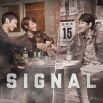It looks like autism could be measured in a sniff! A new study found a sniff response test could actually be used as an early indicator of Autism Spectrum Disorder (ASD).
According to a team of researchers, the way children sniff different odors can form the basis of a test for autism.
While an individual would inhale the sweet but subtle floral scent of a bouquet of roses, for example, the same person would do just the opposite upon walking into a public restroom to avoid the flow of air through the nose. However, the researchers found people with ASD do not make this adjustment and sniff the same regardless of the scent.
Noam Sobel of the Weizmann Institute of Science in Israel said, "the difference in sniffing pattern between the typically developing children and children with autism was simply overwhelming."
Internal action models (IAM) are responsible for the body's actions based on sensory experiences. Olfaction or the sniff response depends on the IAM to moderate sniffs according to smells. In theory, a reduced IAM is a common in ASD, according to the study.
Researchers sout to test the theory that "the sniff response will be altered in children with ASD."
"We do not hypothesize that children with ASD will be unable to sniff, but rather that they will generate an inappropriate sniff given a particular odor," the study says.
Out of the 36 children that participated in the research, 18 were with ASD and 18 were typically developing children. There were 17 boys in each group and one girl, and the average was seven years old, according to reports on Stuff.
Sobel with Liron Rozenkrantz and their colleagues built a computer controlled machine that could "simultaneously deliver odors and measure nasal airflow."
With the help of the machine, researchers measured the sniff response following pleasant and unpleasant odors.
"While typical children adjusted their sniffing within 305 milliseconds of smelling an odor, the researchers report, children on the autism spectrum showed no such response," as documented in the press release.
According to the researchers, they were able to identify children with or without ASD 80 percent of the time with the help of the sniff the response.
Sobel said, "we can identify autism and its severity with meaningful accuracy within less than 10 minutes using a test that is completely non-verbal and entails no task to follow."
"This raises the hope that these findings could form the base for development of a diagnostic tool that can be applied very early on, such as in toddlers only a few months old. Such early diagnosis would allow for more effective intervention," Sobel added.
The findings suggest that a sniff test could be very useful in the clinic, however the researchers noted that their test is not yet ready for that, Jewish Business News noted.
"We can identify autism and its severity with meaningful accuracy within less than 10 minutes using a test that is completely non-verbal and entails no task to follow," Sobel says.
This raises the hope that these findings could form the base for development of a diagnostic tool that can be applied very early on, such as in toddlers only a few months old. Such early diagnosis would allow for more effective intervention."
The researchers now want to rest whether the sniff-response pattern they've have observed is specific to autism or whether it might show up in people with other neurodevelopmental conditions.
The study is published in the journal Current Biology.











